My friend wants to wall-mount some furniture in her apartment, and this requires locating the studs (this is an absolute requirement; the stuff to be affixed to the wall is heavy). The wall in question has an old gypsum-over-wood-lath construction. We have tried two different stud finders on it, but they can’t find the studs; they just home in on the wood lath. How do the pros go about finding the location of the studs in such cases?
Thanks!
Bill
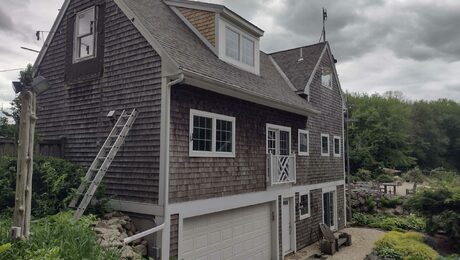
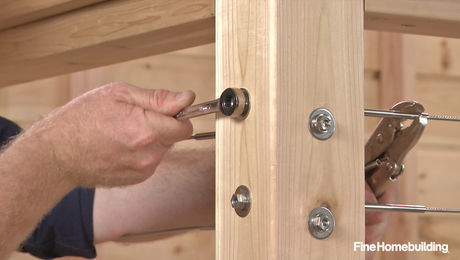

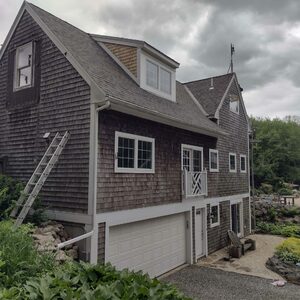





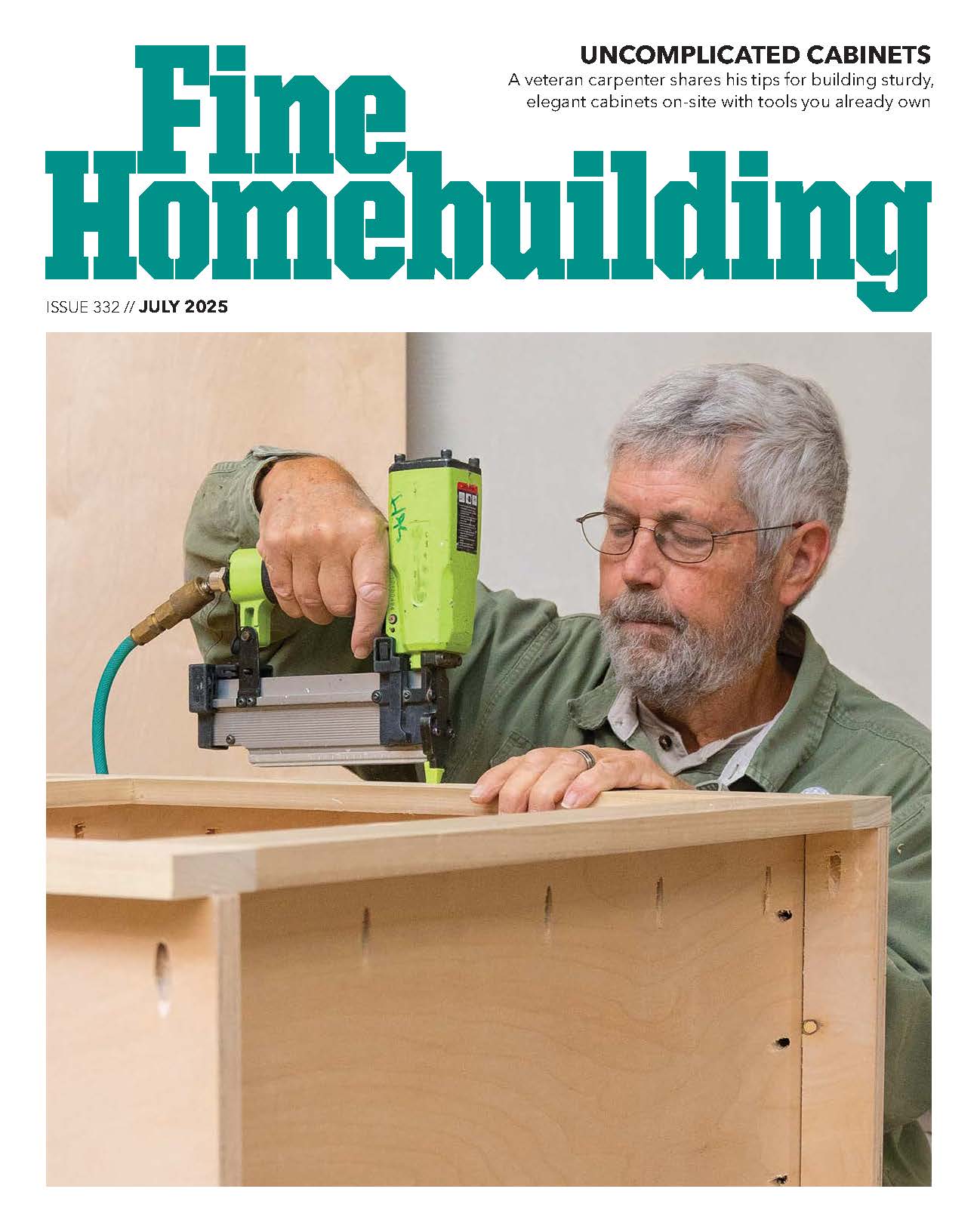
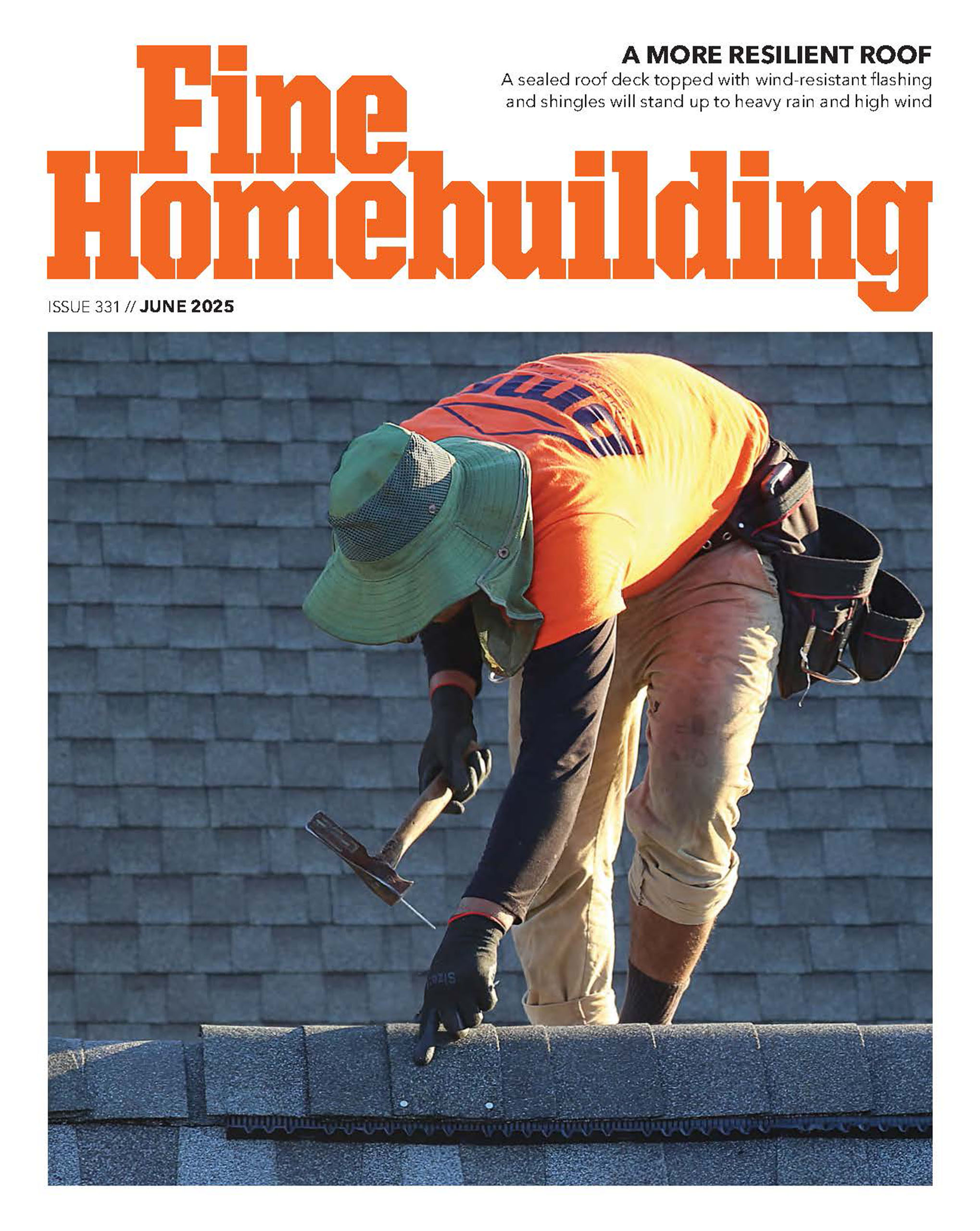








Replies
I've had very good luck with the electronic stud finder which has the "deep scan" setting. Works like a champ. It's yellow, and I can't remember the manufacturer. Most stores carry these and you just need to get this model
John
I've got both a Zircon and a Bosch detector that don't fail me. The Bosch is intended for finding metal rebar in crete and calling out the depth.
Zircon makes about four or five finders from cheap to expensive and for finding stud only or nails in studs line, or electrical..
Excellence is its own reward!
Guess close to how you would have done layout, temper it with the age of the house and then maybe look to the baseboard for a nail depression indicating they nailed to a stud. Find the stud on the side of an electric box and measure off that for remainder. Drill very small holes using a finish nail which won't ruin your drill bit to fine tune the location so you get in the middle of the stud. Tap on the wall with your knuckles. Some say you can fling some dark dust on a wall and if it's ext. in the winter, you'll see a shadow form over the stud.
Remodeling Contractor just outside the Glass City.
Quittin' Time
as a homeowner, I've used the punch-hole-in-wall-with-hammer method.
Probably not how the pros do it, mind you.
That is one way to find 'em darrell. Remodeling Contractor just outside the Glass City.
Quittin' Time
Sometimes you can use a magnetic nail finder to locate nails in baseboard that go into studs, and guess that the studs are vertical. After that, use a fine drill to feel around. If the room has picture moulding, then you may also find nails up top.
Wood lath does make it tricky. Do you have any electrical outlets on your wall? If so, remove cover plate and see if you can tell which side outlet box is nailed to...that will be your stud ( normally).
If unsure which side box is nailed to, measure vertically down to just above baseboard; placing a mark on both sides of box location. Drive a 6 penny finish nail through gypsum at each mark. Nail should "find" a stud on one side or other. If you find a stud via finish nail, then measure horizontally along baseboard 16 inches from stud and drive finish nail in again. If nail again hits stud, now you have a "reasonable" stud layout from which to work off of. Fill the tiny nail holes with a dab of painters caulk and wipe clean with your finger. ( Toothpaste will work in a pinch)
If you don't feel like driving any finish nails into the walls, remove a piece of baseboard trim and place your nails there...the holes won't be seen when trim is re-installed.
Also, if by chance your room has a susupended ceiling, remove a ceiling panel next to the wall and check and/or drive nails in that area...again, the holes won't be noticeable.
LOL.
Davo
" Do you have any electrical outlets on your wall? If so, remove cover plate and see if you can tell which side outlet box is nailed to...that will be your stud"
I'm not sure I've ever seen an electrical outlet on a stud in an old house with lath/plaster. Every one I've messed with is just stuck in the plaster. A lot of times the outlet is just screwed to the plaster, and no box is used.
Come to think of it - If that's the case, you should be able to pull the outlet and look inside the wall with a flashlight to see where a stud is. Back off! You're standing on my aura.
The outlet screwed to the wood lath with no box is a bootleg job. In my place (1926), the boxes are attached to a metal bracket that spans horizontally from one stud to the next. But there are small holes in the sides of the boxes through which you could probe with coathanger wire to find exactly where the studs are. Power off, of course.
-- J.S.
"The outlet screwed to the wood lath with no box is a bootleg job. "
I have no doubt you're right, and I would never do that. But it's pretty common around here in old houses.
I haven't seen plaster that's been put in since the 1960s, though, so these are all old work. If at first you don't succeed, aim lower.
Hi Boss,
My house is plaster keyed into wood lath. I'd say no less than 90 % of all my electrical boxes that I worked on when I re-wired my house were all nailed into existing studs. Only one or two were not directly tied into studs, but rather affixed to the lath. My house was built in the late 1930's.
To Piffin and all others who tout the use of stud finders, please note that I currently have a Zircon ( the "yellow colored thingee" that someone earlier referred to it) that is supposed to find studs, plus, it has a "deep scan" mode for hard to find "buried" studs, plus it contains an additional scanning mode to locate electrical wires....a total of 3 different scanning modes....it cost me approx $50 for this scanner.....the darn thing has NEVER performed accurately when used on plaster/lath walls. It works well on drywall, or even on wood panneling, but not on plaster/lath.
This is the 3rd scanner I have purchased...all for the expressed purpose of being used on plaster/lath walls....NONE HAS EVER WORKED IN THIS SITUATION...so if you have a model that ACTUALLY DOES WORK, please be so kind to list the make and model...I'll purchase it immediately...especially since 90% of my work is home remodeling...I could definately use it.
Davo,
The scanner that I referred to was, indeed, the Zircon. The model I bought for my son's house was about $45, and it had a deepscan mode plus a mode for metal. If you want the exact model number, let me know and I'll get it for you.
I was able to use it to accurately locate two studs for some shelves, and I located them right away. There was a false reading inbetween the studs, but that was clear because the edges of the "stud" were only .5 inches apart. I make a habit of marking the two edges of a stud with a pencil for reference.
The walls of his house are lath and plaster, so I'm stumped as to why your models do not work.
John
i have the top of the line(i think) zircon and performance even in deep scan is poor in plaster with lath, i'll check my model today for surecaulking is not a piece of trim
Yeah John, when you get a chance, please list the model number of the Zircon. So far, it sounds like the one I got; except yours' works and mine doesn't. As for marking both edges of a stud when using a stud finder, that is a very good habit...I do the same thing.
Davo
The Zircon I referred to is in Berkeley (San Francisco area) and I'm in Los Angeles. I haven't heard back yet from my son as to the exact model. As I said, the one I bought was about $45 and it had not only the deepscan mode but also a mode for finding metal. It worked perfectly for this application ... lath and plaster.
John
Sounds like the same one Piffin has...the Contractor Pro. I'll check it out.
Davo
I just heard from my son. It's the Triscanner Pro model.
John
Davo...I have the exact same one..deep scan doesn't work for me either.
I had one side of a bathroom wall open in the hallway and tested the deep scan on the closed side..didn't work at all but I did what IMERC spoke about earlier in this thread. I used a "rare earth magnet" and it worked great. Theyre cheap too!
Rare-Earth Magnets
Be well
andy
In his first interview since the stroke, Ram Dass, 66, spoke with great difficulty about how his brush with death has changed his ideas about aging, and how the recent loss of two old friends, Timothy Leary and Allen Ginsberg, has convinced him that now, more than ever, is the time to ``Be Here Now.''
http://CLIFFORDRENOVATIONS.COM
Edited 7/15/2003 7:35:28 AM ET by Andy Clifford(Andybuildz)
Here's one way. Hit the gas instead of the brakeRemodeling Contractor just outside the Glass City.
Quittin' Time
Calvin,
That pic looks just like the kind of work I see being done all the time on MONSTER HOUSE . Send em that pic and I'm sure you will be picked to be on a future episode! ha! ha!
Davo
Edited 7/17/2003 1:27:21 AM ET by Davo
Me too -- same Zircon finder, it doesn't work even in deep mode on old lath and plaster. The problem is that with variations in the gap between laths, density of lath wood, and the amount of plaster pushed thru to form keys, there's just too much variation for it to be able to distinguish the more solid region around a stud from the field. These things need the uniformity of gyp board to work.
-- J.S.
Andy,
Thanks for the website for rare-earth magnets. I have never used them; though once I considered "burying" one inside a cabnet door and door stop to keep the door closed without any visible sign of a door catch. But, that never materialized.
One question though to you and to IMERC....what size magnet should I use for this stud locating purpose? What size do you all currently use? Thanks.
Davo
It's about the size of a nickle. One the size of a quarter is getting to be too much. These magnets have an attitude.
Keep them away from electronics and your watch or they'll become toast. Pace maker? Sit down so you won't get hurt when you fall.
Epoxy on a small light wieght handle for a little bit of ease. You can get them with a CS hole in the middle of them for a brass or SS FH screw. A 1/4" magnet will HOLD 10 pieces of paper to the refer door.
I get mine from LeeValley Veritas. leevalley.com
You outta see what one 2" dia will do. with a little inguity there is a zillion things you can do with them.
Thanks IMERC. Diameter size of a nickel, eh? About how thick..1/2 inch?
Davo
1/8 - 3/16" The most common one I use is 3/4 to 1" dia and 3/16" thick.
Had to go look.
Thanks
Based on your recommendations, I'm gonna get me one that is 1 inch dia X 3/16 thick.
Davo
P.S. What i'd really like is to get me a pair of those Xray sunglasses that used to always be advertised in comic books years ago! If they can look through ladie's clothing, I bet they can look through walls and find studs! ha! ha!
OK
I didn't find a model number for the Zircon but it is labled contractor pro multi and has four modes,
Stud scan, deep scan, electrical and metal.
metal finds nails
Comparing results of metal scan and deep scan does the trick, especialy combined with some thumb thumping on the wall surface.
Excellence is its own reward!
Piffin,
Thanks for the info.
Sounds like you and JohnHardy have the same model. My 1st Zircon was just a stud finder only. Second one I bought had regular scan and deep scan only. Last model I bought had 3 scan modes...regular scan, deep scan, and electrical scan.....Looks like I need to upgrade to your 4 scan model.
Before I do that though ( shell out another $50), I'm gonna try the earth magnet approach...got nothing to lose, and is a lot cheaper...only out a coupla bucks if it fails me.
Thanks.
Davo
the bosch is nice too but it was about eighty bucks..
Excellence is its own reward!
I have the same Zircon. Banging it on the wall sounds like a way to regroup some of my wasted $$$.
Bosch you say?? Tell me more.
The bosch is made mainly for locating steel rebar in concrete. It will even say within an eighth of an inch how deep it is. Useful for avoiding the rebar when you have to drill holes. I've also used it for finding copper water lines and electrical.
Since it is sensitive to the metal, it will indicate nails in the studs.
In the picutre, you can see a hol in it. That is for a pencil so whewn you locate you can mark exactly the spot. Or you can trip a round ink pad that will ink a round circle on concrete. That is something you don't want on nice wall paper though. ;)
I think it cost me about eighty.
Excellence is its own reward!
Hard to believe that I forgot the pictures isn't it?.
Excellence is its own reward!
Add that to the procurement list....
HEY pif... Look over there.... Whazzatt?????????
I could've sworn I put that in the .....
Excellence is its own reward!
Davo,
I was concerned about how well the Ziron would work, so I asked the store manager if I could take it home and test it out ... and return it for a refund if it didn't work. He game me until the end of the day (bought about 2:00 pm on a Sunday, so not lots of time). You might do the same. After all, if the tool doesn't "work as advertised" you should be able to get your money back.
As I said, it worked great. There was one instance where the lights indicated a stud, but the area wasn't 1.5 inches wide. False alarm.
John
In Southern Calif. they sell rare earth magnetics for a buck a piece. I always see them at the TRW Swap Meet. Or, break open an old hard drive and find them there. Hard part of magnet removal is the strong glue the use on its base. Heat the magnet with a torch and it will lose its magnetism.
My method of finding studs is to select a spot for an old work box and start cutting. My pal Murphy usually puts a stud at least partially within this space....that's not a mistake, it's rustic
just get the strongest one they sell..maybe a few different streghts so you can test them out for whatever purpose.
a
In his first interview since the stroke, Ram Dass, 66, spoke with great difficulty about how his brush with death has changed his ideas about aging, and how the recent loss of two old friends, Timothy Leary and Allen Ginsberg, has convinced him that now, more than ever, is the time to ``Be Here Now.''
http://CLIFFORDRENOVATIONS.COM
I'll have to check the model numbers at the job. it's in my electronics bag out there..
Excellence is its own reward!
I too have purchased 3 electronic studfinders, the latest being a Zicron Multiscanner Pro SL (yellow with black grip) just last week. As with the previous stud finders, I can't get accurate, consistent readings with this one either even in drywall and certainly not with plaster walls. This last one cost around $ 45.00, but I would gladly pay twice this amount for one that really worked.
I have a old magnet/pointer type that works fairly well if you can find a nail, but I would like to see one with a high performance magnet. Has anyone seen one?
I do have a very simple Japanese tool, it's essentially a pin/needle that retracts into a handle. You press it through the drywall (plaster is too hard), it creates a tiny hole and you know for sure whether you have hit a stud. It's still invasive, as it creates a tiny hole, but it works! I got it from Garret Wade or Lee Valley, can't remember which one.
Thanks,
Go to the inside of the house and find you studs. Then figure how far they are from a common starting point, as in the edge of a window.
Whatever system is used, there's always a chance of making a mistake. If you know the exact position of the object (shelf, picture, etc.) to be mounted, make your test holes in a thin horizontal line where they will end up covered regardless.
Locate the nearest receptacle. Remove the cover plate and feel next to the box for a stud. Once you locate one the others are usually on 16" centers. It usually gets me close without having to resort to stud finders and electronics.
The trouble with counting on 16" centers on old lath and plaster is that it those days they weren't all that careful about staying on pattern. There could be several in a row at 16 1/2". Accurate layout didn't become important until sheet goods like drywall and plywood came along.
Here's a copy of what I posted on this over in the Tools folder:
PIerre1 asked for a report on the Zircon MT-6 expensive fancy metal detector. I've had a chance to give it a good try, and it certainly works better than any stud finder I've seen on old lath and plaster walls. It can detect quite accurately the little 2d or 3d nails that hold the lath to the studs, which tells you where the studs are. It also finds electrical black pipe and copper water lines.
I've also tried it for finding broken nails embedded in old lumber before re-milling it. Mark over at Knots suggested powerful rare-earth magnets for that, so I tried the 1" cube magnet from:
http://www.rare-earth-magnets.com/SearchResult.aspx?CategoryID=21&KeyWords=Cube&All=True
To keep the magnet from getting dirty with impossible to remove tiny fragments of steel, I put it in a heavy plastic bag. I found that I can find studs by dangling the magnet in the bag against the wall and moving it horizontally until it tugs at the tiny nails. When it finds black pipe, it pulls strongly enough to stick itself to the wall.
Bottom line, the MT-6 and the 1" cube magnet in a plastic bag are pretty much a wash for sensitivity and accuracy in finding studs and black pipe. The MT-6 will also find copper and brass, but for ten times the price.
-- J.S.
Why not take the cover off the recepticle and drive your nail at an angle on the sides of the box to find the stud, one side will have a stud, no hole to patch.
Yes, you could do that, but I don't know what kind of electrical background the poster has. I would actually just pull out the outlet and then look, or disconnect the outlet and then look, but I did'nt want anyone to get jolted if they should happen to touch the outlet or switch at the wrong moment.
Speaking of getting jolted... today an electrician at Weirton Steel Co was working on top of a roof, and somehow his safety harness ( don't know which part of harness..."D" ring, or lanyard clip) came into contact with HIGH VOLTAGE...23,000 volts to be exact. He was life flighted to a Pittsburgh, PA hospital Burn Center. Dude is in very bad shape. Electricity is not something to take lightly, whether it be 20,000 volts, or merely 110.
Davo
Take a trip to your local Radio shack and buy one of their cheapie metal detectors..........$20-$25, I think.
Tune it accordingly and it'll sing out on the nails holding the wood lath and/or the drywall screws......directly under the center of the sensor disc. Flag your strikes with pieces of tape and then measure between them to make certain you're not finding Romex or the like.
There are "super magnets" that are so strong, they will stick on the wall to the nails of the wood lath. A pair of them will stick to each other with your hand in the middle. You will find them in your computer hard drive,
Rare earth magnets.
sorry but educated guessing followed by intrusion is really the only way
im faced with this problem almost everyday as a kitchen installer in many older homes
i usually start by measuring 16 inches in from the nearest ouside wall, trying a nail or screw, then again at 32 48 etc
electrical outlets may also give a clue but they are not very reliable in older homes
studfinders as a rule will not work through plaster/wood lath, metal detectors might work, never tried it
look for nail marks in the trim(if you can see them)
tapping on the wall may work if the plaster is still tight on the lath, listen for a dull solid thud instead of a hollow sound
as a last resort, locate the furniture, mark the wall where it goes and start invasive stuff with a finish nail
ps with old plaster and lath, predrill through the plaster before driving a screw in to it, the screw may loosen the plaster/ lath creating a god awful mess
caulking is not a piece of trim
most of the older houses are balloon framing studs run from basement sill to top plate try to peek at the studs.
Tim
There's another drawback to finding by driving a nail in baseboard. Around here, most of the ones that I strip to studs show that they put nailing block backing at the top of baseboard level so they could nail on anyplace with the cap mold. You could be hitting solid anyplace.
Stud finders that work by looking for metal (nails) do an accurate job. I'm surprised to find so manyhere saying they don't work. must be cheapie versions.
Boss and John Sprung, around here, there are lots of those switches with the box set to the lathe with tiny screws in box edge or some with the wing clamp retro boxes. With either, it's easy to take it out to look in the wall..
Excellence is its own reward!
Go to Home Depot or Lowes and find a TOT LOCK. This is the magnet that goes with the child-proof locks for cabinet doors. It is very strong, only cost about 6 to 8 dollars and will find the nails behind the plaster. Nails ar in studs. It works great for me.
There are many good ideas so far.
Electronic stud detectors, especially the more expensive ones, can often give good results on plaster/ lath walls. A strong magnet can often localize a nail ang give a good clue.
Electrical boxes, if any are present, can give you a peek. Look closely at the box. An old work box, one attached to the wall itself, can be removed to provide a clear view of the wall space. One attached to a stud tells you where a stud is and plaster next to the box, but still under the cover plate, can be removed to allow a hole for probing or a nice view.
Knocking on the wall can often give useful information. Luck and experience helps with this. A screwdriver handle saves wear on the knuckles. Get carried away and you damage the wall. Old plaster lath walls can be tender, especially in damp locations like bathrooms.
Nail holes in baseboards can give you a clue if there was not continuous blocking, fairly common in some areas, installed. With blocking the nails can go in anywhere so they would be no help. Sometimes baseboards can be pried away from the wall. Sometimes this works best where you can play with the baseboards in a closet on the opposite side of the wall. Similarly a propitiously located medicine cabinet can be removed.
Attics and crawl spaces can often provide answers. Pairs of 16s at 16" intervals are a dead give away if you can see the plates.
A brad, cut square, can be used to drill a fine hole. This can be probed with a piece of stiff wire. A crank shape with a matching pointer bent in can be used. The pointer locations are marked when a stud is felt and the actual locations extrapolated using the hole location. With care and experience accuracy can be high. Telling you quite a lot by feel. Beware of diagonal bracing. Many early houses used full sized stud material run diagonal but in pieces between the studs. Finding one of these and assuming it is a stud can cause problems.
As with anything else I use any technique that will get me by. No one method works all the time. knowledge of the houses, especially if built by the same builder, helps. There are a lot of variations. Experience and a bag full of tricks helps but none get it right all the time so have some options in the patching department.
Use an eletronic stud finder. Bang on the wall with it and listen.
Glendo.
ROFLAMO! That's definately putting the thing to good use! I shoulda thought of that!
Davo
One big timesaver i've discovered in situations like these are Toggler toggle bolts. These aren't much like the old style toggle bolts, which required large holes, couldnt be reused, and are a PITA to install. These totally revolutionized mounting stuff to drywall and plaster walls for me.
I worked at a hospital a while back, and we would mount all kinds of heavy objects to the wall with these. The best was a rack for hanging the lead aprons the x-ray techs use. These would hold 10 or 15 of the aprons (probably 30-40 lbs each) on arms that swung out from the wall. Just anchored into 5/8 rock. I think they send free sample packs.
http://www.toggler.com/toggle.html